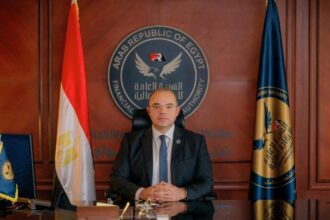The Ministry of International Cooperation has revealed that multilateral and bilateral development partners channeled financing worth $1.4bn into 32 projects in 95 locations across Egypt to enhance the health sector and implement the third Sustainable Development Goal (SDG 3): Good Health and Well-being.
According to the ODA-SDG map, 18 development partners provided funds worth $1.4bn, representing 5.6% of the current financing portfolio. The amount of funding reflects how the health sector is highly prioritized by the Egyptian government that strives to improve healthcare services especially against the backdrop of the increasing global interest in the health sector following the COVID-19 pandemic.
The financing directed to SDG 3 also contributes to other SDGs, such as SDG 1: No Poverty; SDG 4: Quality Education; SDG 5: Gender Equality; SDG 6: Clean Water and Sanitation; and SDG 10: Reduced Inequalities.
The multilateral development partners who contributed to the provision of these funds are: the World Bank; the European Union (EU); the Arab Fund for Economic and Social Development (AFESD); the European Bank for Development and Reconstruction (EBRD); the World Health Organization (WHO); the United Nations Development Program (UNDP), the United Nations High Commissioner for Refugees (UNHCR), the United Nations Population Fund (UNFPA); the World Food Program (WFP); and the Joint United Nations Programme on HIV/AIDS (UNAIDS). Other bilateral development partners are Germany, the Saudi Fund for Development (SFD), France, Switzerland, the US, Canada, Italy, and Japan.
Rania Al-Mashat, Minister of International Cooperation, explained that within the framework of the Ministry’s keenness to consolidate the principles of transparency and governance and enhance communication with the people, the ODA-SDG map, in light of the second principle of economic diplomacy, allowed citizens and development partners to view the details of all projects implemented across Egypt’s governorates in various sectors. Projects are grouped according to their locations and the relevant SDGs they serve.
Al-Mashat stressed that the map enables Egypt to fulfill its development priorities by identifying what has been implemented and, consequently, pinpointing the gaps so as to direct future partnerships towards bridging these gaps. The map promotes transparent and effective communication with stakeholders and citizens to learn about the national development efforts made through international partnerships.


